“We are obligated to live meaningful and purposeful lives. We will never forget them… We will earn what they have given us.”
George Benson, LtCol 1/6 USMC, 2012
Initially activated on 11 Jul 1917 at Marine Corps Base Quantico, the 1st Battalion, 6th Marines (1/6), sometimes called “Deathwalkers” or “Comanche” with the mottos “1/6 Hard” (a name derived from its commander at Belleau Wood, Maj. John Arthur Hughes, aka “Johnny the Hard”) and “Ready to Fight” is an infantry battalion in the United States Marine Corps based at Camp Lejeune, North Carolina. It consists of approximately eleven hundred Marines and sailors. They currently come under the command of the 2nd Marine Division of the II Marine Expeditionary Force (II MEF). The unit’s Company-specific nicknames are: Alpha Company “Apache;” Bravo Company “Black Foot,” and sometimes “Black Iron;” Charlie Company “Cold Steel;” and Weapons Company “Warrior” or “Laredo.” The 1/6 Battalion’s fierce reputation at the Battle of Belleau Wood (1-26 Jun 1918) is a key part of the broader Marine Corps legend of how the nickname “Devil Dogs” (or Teufel Hunden) came to be. While this nickname applies to the entire Marine Corps, its origins are closely tied to the history of the 1/6 and the 6th Marine Regiment. As of this writing, Marines TWS lists 2,400 individuals who have served bearing this unit’s colors. Among numerous published and film histories of the 1/6 and the 6th, a distinguished and comprehensive scholarly monograph, and eventual book (especially on pages 136-153), “A Brief History of the 6th Marines” was penned in 1987 by Lieutenant General William K. Jones (1916-1998) USMC (Ret), someone who was exceptionally well qualified to write such a history having been a 1/6 company commander, XO and its Battalion Commander. General Jones was born in Joplin, Missouri (also your author’s hometown).
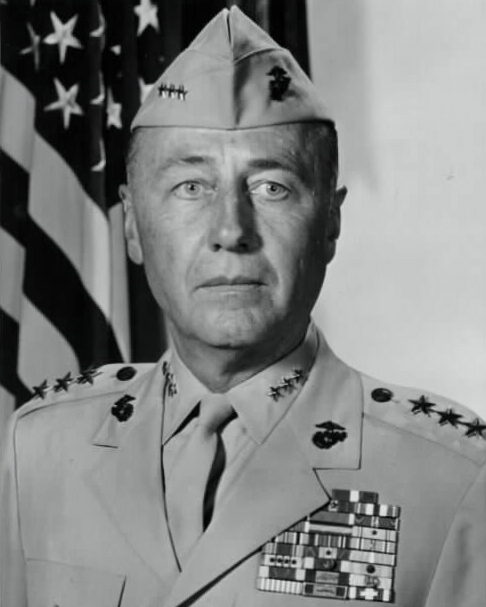
1st Battalion 6th Marine Regiment Made Its Insignia Famous
The most famous insignia associated with the 1st Battalion, 6th Marines is its distinctive red diamond SSI, which dates back to its service in France during World War I. That historic patch is based on the insignia of the U.S. Army’s 2nd Division, with which the battalion fought. To distinguish themselves, the Marines of the 4th Brigade created their own insignia based on the same imagery. The 1st Battalion, 6th Marines’ patch had a red diamond background. This shape was a variation of the 2nd Division’s insignia. The patch included an Indian head with a full war bonnet, representing the nickname “Old Indian” for the 2nd Division’s Commander, Brigadier General John A. Lejeune. The patch also included a black shield to mourn casualties and symbolize defense. It incorporated a five-pointed star representing the Second Division. The red color of the 1/6 insignia’s background was designated for the 1st Battalion of the regiment. During World War I, the 2nd Division (Army) decided that all units in the division would wear the same insignia—an Indian head on a white star—but would have a different color background to indicate their specific unit. For the 6th Marine Regiment, the background colors were assigned as follows: Red: 1st Battalion, Yellow: 2nd Battalion, Blue: 3rd Battalion, Black: Headquarters, Purple: Machine-gun Company. The 6th Marine Regiment received a prestigious honor from the French government after its heroic actions in several battles in France. Awarded for Valor: The 6th Marine Regiment was awarded the French Croix de Guerre (War Cross) three times for actions at Belleau Wood, Soissons, and Blanc Mont. As a result, the regiment was authorized to wear the Fourragère, a braided cord, on its uniform. The 6th Marines is one of two Marine units to receive this award. The Fourragère became a permanent part of the 6th Marines’ uniform, and all members of the modern regiment are authorized to wear it.
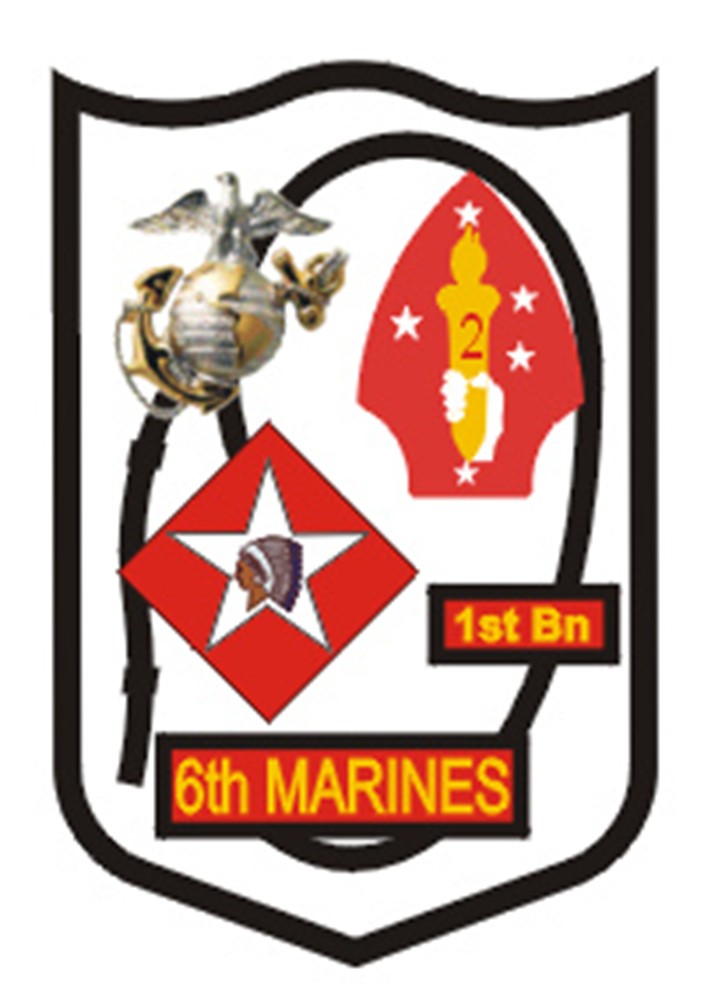
1st Battalion 6th Marine Regiment at Belleau Wood
The unit’s USMC history site records, “The Battalion got its name from its commander at Belleau Wood, at the time Major John Arthur Hughes, known by then as ‘Johnny the Hard.’ The battalion gained its nickname ‘Hard’ in part from its famous commanding officer, but largely from the courageous actions of the battalion’s Marines at Belleau Wood and ever since. The name would have died if 1/6 did not continue to stay ‘hard.’

Colonel Hughes joined the Marine Corps as an enlisted man in 1900, but was made a second lieutenant the next year. He served in the Philippines, Cuba, and Panama his first decade in the Corps, and in 1914, as a captain, he distinguished himself at Vera Cruz and was awarded the Medal of Honor. In 1916 he commanded the Marine ships detachment on board USS Delaware and was then sent to the Dominican Republic, in command of the Marine Barracks, San Francisco de Macoris. The Corps was there to keep the peace and to keep guerilla forces, called insurrectos, from undermining the Dominican government. On December 3, 1916, he earned his nickname. Apparently not satisfied with staying in the barracks, Major Hughes was out with his Marines hunting for insurrectos when he was shot in the leg, breaking a bone in his shin. Undaunted by the image of his own shin bone jutting out of his leg, he is said to have asked for some wire cutters. He cut the protruding bone off, wrapped the leg, and continued the fight. Word got around about this from his men, and he was called ‘Johnny the Hard‘ from then on.
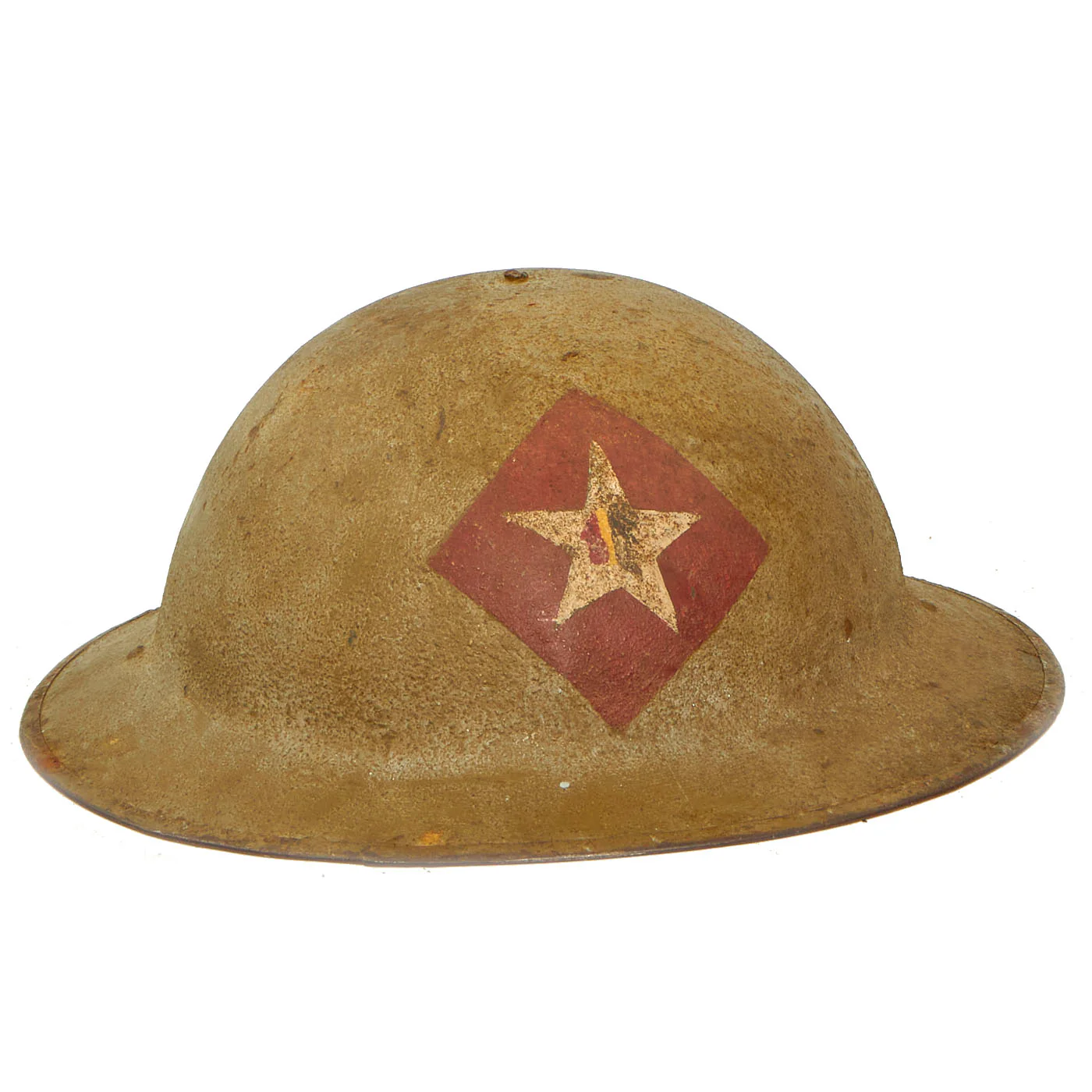
In 1917, still recovering from his wound, he sailed to France. He was the Battalion Commander of First Battalion, Sixth Marines, at Belleau Wood. The Battle of Belleau Wood was hard-fought, and at one point, the 1/6 was down to only one hundred men, from a starting strength of around one thousand. Major Hughes rose to the occasion; his courage under fire inspired his Marines, earned him the Navy Cross, and, most importantly, led his Marines to victory. Before the end of the war, Hughes was personally awarded the Croix de Guerre twice and promoted to Lieutenant Colonel.”
1st Battalion 6th Marine Regiment Serves Globally Today
This unit’s continuously long and storied trek to glory began during and following World War I campaigns including: Aisne, Aisne-Marne, St. Mihiel and Meuse-Argonne along with the following defensive campaigns: Touln-Troyon, Chateau-Thierry, Marabache and Limey. 1/6 participated in the Occupation of the Rhineland from Dec 1918 to Jul 1919. After the war the battalion relocated to Quantico, Virginia and was deactivated there on 20 Aug 1919. The battalion was reactivated on 12 Jun 1922 and participated in maneuvers at Gettysburg. From Jun–Jul 1922, it was assigned to the Marine Corps Expeditionary Force. In Jun 1924, 1/6 deployed to the Dominican Republic and Guantánamo Bay, Cuba, participating in expeditionary operations until September 1925. The unit then returned to Norfolk, Virginia, and was again deactivated on 1 Oct 1925. After being once more reactivated in 1927 from that point right on up to the present, this unit participated or fought in many battles, campaigns, and humanitarian efforts, including: Tientsin with the 3rd Brigade, Shanghai with the 2nd Marine Brigade/Fleet Marine Force, Reykjavik with 1st Provisional Marine Brigade, and in 1942 to New Zealand. From there, they were deployed to Guadalcanal, the South Solomons, Tarawa, Saipan, Tinian, and Okinawa, ending World War II. They were then assigned to Nagasaki and the Occupation of Japan until returning to San Diego and being deactivated in late 1947. By October 1949, they were stationed at Camp Lejeune with the 2nd Marine Division, from where they were active during the Cuban Missile Crisis in 1962, the Dominican Republic in 1965, and Panama in support of Operation Just Cause by 1989. From September 1990 through March 1991, they were part of Operations Desert Shield and Desert Storm. In 1999, the 1/6 saw action in Kosovo under Operation Noble Anvil. Beginning in March 2003 and again from March 2006 to May 2007, they did their part in Operation Iraqi Freedom. In between and beyond those deployments, they saw action in Operation Enduring Freedom during 2004 and 2008 through 2012.
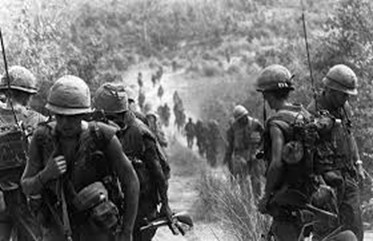
During the Vietnam War era, from 1964 to 1975, and from then until 1989, the I/6 was engaged in several non-theater operations. Referring back to Lt. Gen. Jones’s remarkable book, Marines TWS member Sgt. Donald York, on active duty during that time, summarized their activity this way, “… [they] were considered during that period to be the Corp’s primary cold climate force training in Vermont, the Rockies, and making training deployments in Iceland/Norway. They were one of the standby forces if the shit were to hit the fan in GTMO. And, I was in GTMO 1974 and 1975 for two years… During that period and prior, 6th Marines were the rapid reaction force to augment the always-present battalion that rotated in and out of GTMO. Because of their lineage back to France and the historic importance of Belleau Wood, the 6th Marines will probably always be stationed on the East Coast unless a major conflict breaks out elsewhere in the world.” Included among those era duties were assignments such as previously noted above and deployments to the Mediterranean and Caribbean (e.g., Vieques) in addition to spending as much as fifty percent of their time in the field and sometimes even in support of Camp law enforcement necessities during a time of disciplinary turmoil in the branches. The unit performed joint or combined arms operations with the Army at Fort Bragg, Camp Drum, Camp Pickett, and at Twentynine Palms, as well as under a number of other named Operations as far away as in Okinawa and Korea, and with USAF on Tinian, Guam, and back to Japan“…when it came time for the battalion to return to Camp Lejeune, the commanding general, Major General Robert E. Haebel, surprised everyone by asking loudly to the battalion, ‘What do you do best?’ The battalion immediately shouted, `Attack! Attack! Attack!”
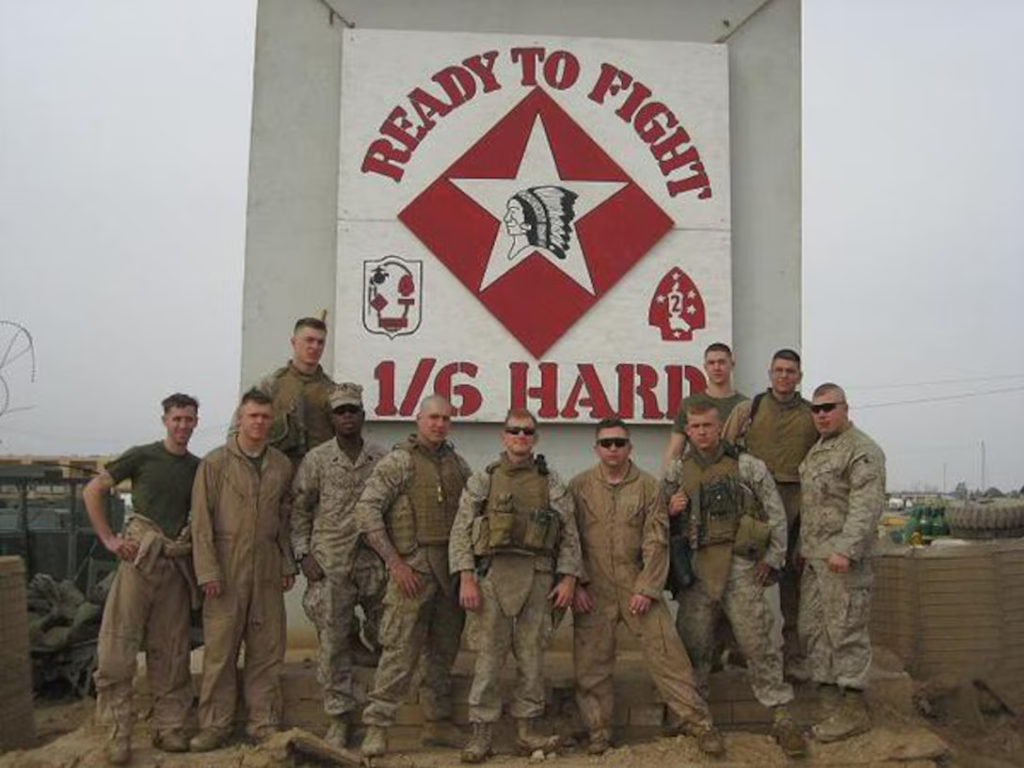
The 1st Battalion 6th Marines has been awarded the following recognitions: Presidential Unit Citation Streamer with Bronze star, World War II Tarawa – 1943, Afghanistan 2009–2010, Joint Meritorious Unit Award, Operation Sea Signal 1994, Operation Pacific Haven 1996-1997 B Co, Operation Inherent Resolve 2017, Navy Unit Commendation Streamer with Silver Star and Bronze Star, Panama – 1989, Southwest Asia – 1990–1991, Kosovo – 1999, Afghanistan – 2004, 2010, Iraq – 2006 – 2007, BLT 1/6 2014, BLT 1/6 2016, OIR 1/6 C – 2017, Israel-Hamas Conflict 2023-24, Navy Meritorious Unit Commendation Streamer with Bronze Star 1986–1987, Afghanistan 2008, 1/6 UDP 2020, World War I Victory Streamer with five Bronze Stars, Army of Occupation of Germany streamer, Yangtze Service Streamer, China Service Streamer, Marine Corps Expeditionary Streamer with two Bronze Stars, American Defense Service Streamer with one Bronze Star, European – African – Middle Eastern Campaign Streamer, Asiatic – Pacific Campaign Streamer with one Silver And One Bronze Star, World War II Victory Streamer, Navy Occupation Service Streamer With Asia And Europe, National Defense Service Streamer with three Bronze Stars, Armed Forces Expeditionary Streamer With one Bronze star, South West Asia Service Streamer with two Bronze Stars, Kosovo Campaign Streamer with one Bronze Star, Global War on Terrorism Service Streamer, Afghanistan Campaign Streamer with three Bronze Stars, Iraq Campaign Streamer with three Bronze Stars, Global War on Terrorism Expeditionary Streamer, Inherent Resolve Campaign Streamer, and the French Croix de guerre With Two Palms And One Gilt star. In all, such superlatives being, as they are, warranted when rightly deserved, the 1st Battalion of the 6th Marine Regiment earned, and will continue to earn, every recognition that locates them among the pantheon of those who went before in whose honor they served.
Read About Other Famous Military Units
If you enjoyed learning about 1st Battalion, 6th Marine Regiment, we invite you to read about other Famous Units on our blog. You will also find military book reviews, veterans’ service reflections and more on the TogetherWeServed.com blog. If you are a veteran, find your military buddies, view historic boot camp photos, build a printable military service plaque, and more on TogetherWeServed.com today.
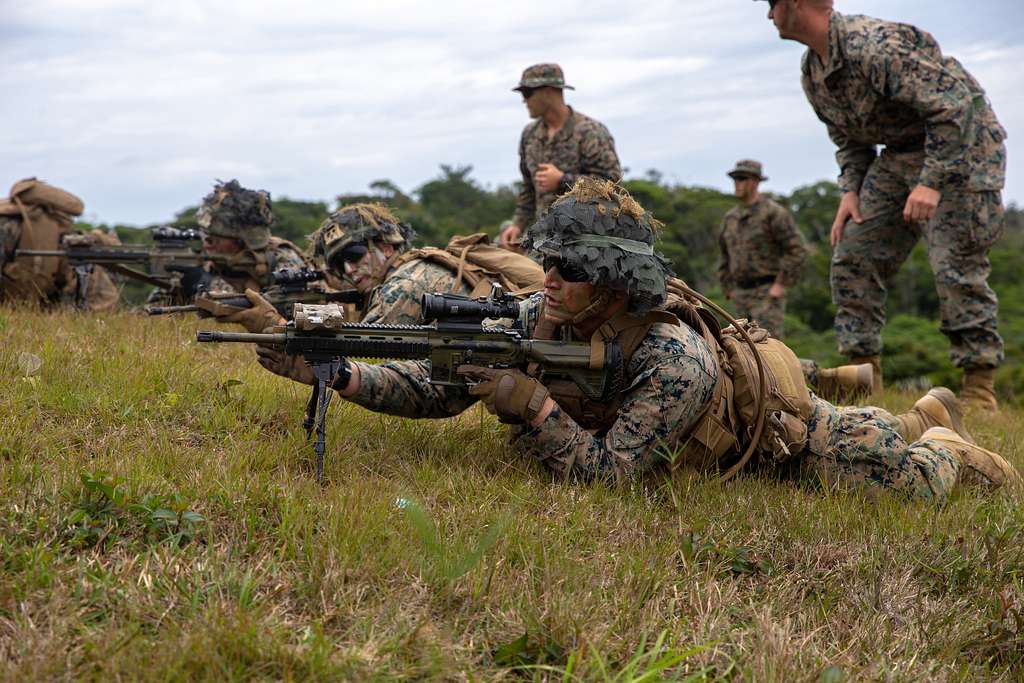
0 Comments